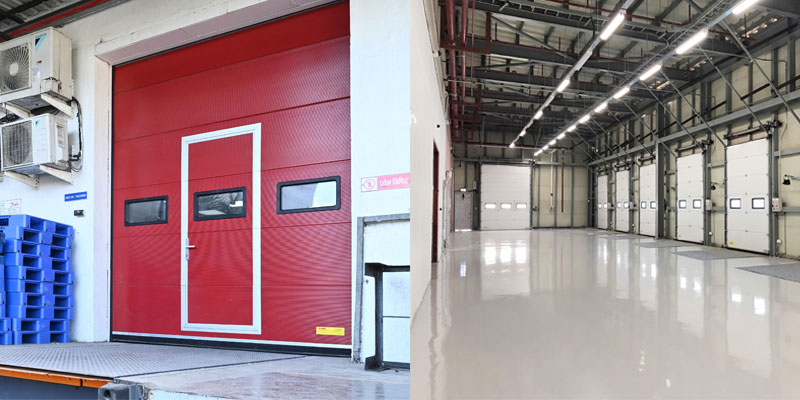Schedule a Call Back
How to use machine learning for better forecasting
 Industry News
Industry News- Nov 26,22

People in industrial sectors can’t predict the future with certainty. However, applying machine learning in forecasting can be a tremendous help in showing them the likelihood of certain scenarios before they happen. Here’s a closer look at ways companies can and have used it.
Know what customers will want and when
Using machine learning to create a forecast can help retailers know which products will be in the greatest demand at certain times. Not surprisingly, teams at Amazon are at the forefront of continually updating and improving algorithms to make them more robust and valuable.
One recent development represented a move away from typical one-dimensional models that only show data from a single seller or one product. However, multidimensional versions can forecast additional situations, making them more reflective of real life.
In 2021, Amazon’s machine learning researchers presented work on a multidimensional product-demand forecasting model that factored in correlations between sellers. Lab experiments showed it was 16 per cent more accurate than one-dimensional versions.
However, certain instances showed even greater accuracy gains. For example, the model gave a 30 per cent accuracy boost for circumstances where multiple sellers offered the same product. It was nearly 25 per cent more accurate in providing forecasts for so-called “cold start” products with less than three months of data.
An accurate forecast for customer demand is critical to providing excellent service. People who realize the products they want aren’t available somewhere often associate that particular retailer with disappointment. However, the appropriate use of machine learning for forecasting could reduce that unwanted outcome.
Achieve better manufacturing resilience
Challenges such as raw materials deficiencies, pandemic-related lockdowns and labor shortages have created numerous issues for manufacturers. Many of those problems persist. However, using machine learning for better long-range forecasting is a viable option.
Manufacturers are more likely to have the information they need to prevent delays and accommodate future needs. Forecasting improvements also reduce supply chain strains, leading to happier customers.
Some solutions that use artificial intelligence and machine learning even allow for autonomous supply chain planning. One investigation of consumer packaged goods (CPG) brands showed that such an approach could cause a revenue boost of up to 4 per cent. Other advantages included a reduction in supply chain costs of up to 10 per cent and the ability to hold up to 20 per cent less inventory.
Letting machine learning handle forecasting and supply chain planning can eventually lead to less human involvement, allowing people to get involved in other duties. The organization can also become more adaptive, thanks to real-time information. That makes it easier for company leaders to overcome obstacles more efficiently rather than allowing them to severely disrupt manufacturing operations.
Improve preparedness for inclement weather
Bad weather can cause significant issues for the industrial sector, especially if businesses are ill-prepared for it. However, using machine learning in forecasting is an excellent way to minimize the adverse effects weather can cause. Google applies advanced algorithms for flood prediction and to help farmers manage climate change. That gives agricultural professionals more time to adapt to challenging conditions.
In another instance, the engineering company Siemens Gamesa, which manufactures and provides services related to wind turbines, applied machine learning in forecasting to improve the performance of digital twins. Many industrial companies use digital twins to enhance the planning process for various scenarios.
The Siemens Gamesa team worked with technology providers to use physics-informed machine learning models. They allow simulating scenarios up to 4,000 times faster than traditional methods.
People involved with the project can then make more informed decisions about wind farm planning, including turbine placement and methods to reduce costs while maintaining efficiency. However, they’re also concerned with modeling how the turbines would perform in severe weather. The answers will help leaders decide when to shut them down versus keeping them running as a major storm approaches.
Turning turbines off could cause significant power generation disruptions. However, keeping them running during a storm that’s too strong could result in costly damage and lengthy repair timelines. Combining machine learning and digital twins helps company leaders enhance their forecasting by becoming aware of previously unknown factors.
Reduce development costs
Relying on machine learning in forecasting is also a viable way to develop the best products at lower costs. In one 2022 study, researchers took data from 300 batteries representing six different chemistry profiles. They used it to make a machine-learning algorithm to predict battery lifetime.
This effort stood out because the algorithms only needed data from one cycle of experimental data. Previous attempts to make battery lifetime forecasts were challenging because they required cycling. That takes a long time and is expensive.
However, consumers understandably want to know how long a new battery will last. That information could drastically influence their purchasing decisions, especially if the battery is for something critical, like a health product or a car.
The researchers clarified using machine learning in forecasting could cut development costs and time. That’s because it could help researchers decide whether it’s feasible to continue working with a particular battery material. They’d only need information from a few cycles and could let the algorithm do the rest.
Using machine learning in forecasting makes sense
It takes time and other resources to determine the most appropriate ways to apply machine learning in forecasting. However, the examples here and elsewhere show why industrial decision-makers should strongly consider seeing how machine learning could work for them.
About the author:
Emily Newton is a tech and industrial journalist and the Editor-in-Chief of Revolutionized Magazine. Subscribe to the Revolutionized newsletter for more content from Emily.
Related Stories

Automation is accelerating structural shift in Indian manufacturing: Atul Patil
In this interview, Atul Patil, GM, Strategic Planning, Factory Automation and Industrial Division (FAID), Mitsubishi Electric India, explains how are automation technologies—robots, cobots and dig..
Read more
India serves as a strategic pillar for Silmax’s Asian expansion: Dr Fumagalli
In this interview with Rakesh Rao, Dr Dario Maria Fumagalli, President & CEO, Silmax, elaborates on the growth potential of India’s machine tools industry and the company’s long-term commitment ..
Read more
Sectional Overhead Doors Deliver Safety, Thermal Efficiency and Soundproofing
Sectional overhead doors deliver superior safety, insulation, and performance, making them ideal for modern industrial and commercial facilities seeking reliability, efficiency, and long-term protec..
Read moreRelated Products

Digital Colony Counter
Rising Sun Enterprises supplies digital colony counter.
Robotic Welding SPM
Primo Automation Systems Pvt. Ltd. manufactures, supplies and exports robotic welding SPM.

Heat Exchanger Scale Removal Compound -hesr-300
Hi There!
Now get regular updates from IPF Magazine on WhatsApp!
Click on link below, message us with a simple hi, and SAVE our number
You will have subscribed to our Industrial News on Whatsapp! Enjoy














